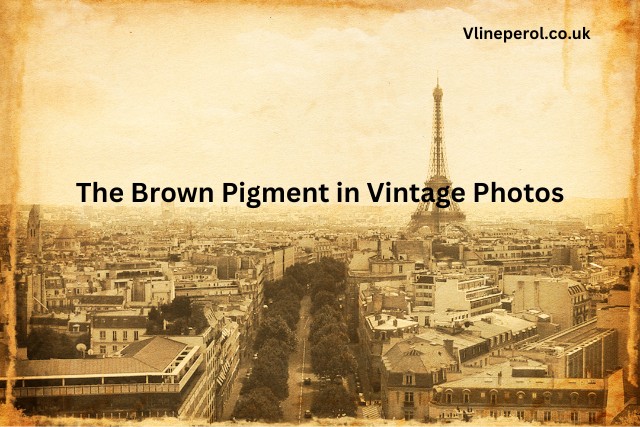Vintage Photos presents a remarkable capability to explore the realm in time. You will get some time in history. A wonderful part of those photographs is their amazing Brown Pigment. It conceals the visible part. You can feel the warmth from the creation of the puzzling photos. You will come to know about the mysterious history. There are inspiring stories to share. We must dive into the world of Vintage Photos. We can analyze the initial level. We need to understand the style and the system of achieving it. In the article of Vlineperol, you can get the right information on brown pigment in vintage photos.
Next, we are going to share the procedure of entering the vintage photos.
Entering The Initial Steps to The World of Vintage Photos
The photography project began at the time of 1900. Some tricks were old-fashioned as per the present criteria. The daguerreotype is the valuable cycle of visual and Louis Daguerre had developed it in 1839. The plate is made of copper having a silver coating. It is a part of the cycle for obtaining pictures. With the development of the photograph, there were different materials and techniques. You can get the development of the prints of the egg white colour. A person can encounter prints of gelatin silver. The pictures have been modified with sepia and they are meant for the long term.
Next, we need to understand the presence of brown pigment in our photos.
Exploring The Brown Pigment in The Photos
We need to know the reason behind concealing the brown pigment simply like the vintage photos. The initial visual cycle shows a lot of research. We have come across this brown pigment in various photos after using design compounds made of silver. We are using Sepa created at the time of the movement cycle.
We have come across the Brown Pigment in various photographs due to the application of designed compounds of silver. You will use sepia creating a cycle of movement. The Sepia shaping had sold the metallic form of the silver. It is meant for a photograph having the silver compound. This could be a tone which is flushed normally or brown.
Next, we will talk about sepia trim.
Sepia Trim
The formation of Sepia shows the structure of the vision. You can get pictures of the Brown Pigment. We used it to get involved in the photos of the days to come. There were sepia compounds, which were dependable in comparison to metallic silver used in the new photographs. In the particular time limit, it is a strategy which had been popular for the attractive form. You are sharing photographs for an unstoppable and respectable look of brown pigment in vintage photos.
Next, we will discuss about the mode of editing of photos.
Method of Editing Photos
Sepia forming will be able to modify the photos with the addition of priority and warm nature. The photographs had turned out to be gorgeous. There were tones in normal shade. You can extract the vibe on the examination and deep thinking. We can modify the portrayal and there were background scenarios among the memories.
Next, we will explore the secret of clouding of the brown pigment.
What is The Secret Behind The Clouding of The Brown Pigment
The Brown Pigment clouding among the photos of the Vintage category has been modified by 2 – 3 factors. They are as follows
Factors Associated with The Decay of Brown Pigment
There is a reaction to the light, especially for the big light. You will get confinement among the shades of colours. A person will come across a shift in the temperature and clamminess and you will find the corruption for the combinations used in the important systems of progress.
Next, we will talk about the procedure for controlling them.
Steps for Control
In order to go through the darkening environment, we need to keep the remarkable photos in feeble, cold and dehydrated weather.
- We can use the UV-protected film or glass.
- You can get photographs which will help us in protecting the tones of brown pigment in vintage photos.
Next, we will understand the conservation of old pictures.
Conservation of Old Pictures
Challenges in Preservation
Sepia-toned photos and other old photos generally present the following challenges when being restored. Conditions for storing such photographs may include light, humidity, and temperatures may vary and these all may have certain effects on the final result. Light will result in the fading of the image while humidity will promote mold formation as well as chemical reactions that will reduce the quality of the image.
Next, we will discuss the techniques of preservation.
Techniques for Preservation
This is the primary problem having restoration of those vintage photos has given the priority for the authenticity of a particular picture. There is a standard of this image. There are some techniques of restoration and they are as follows:
- Digital Restoration:
At present, you will come across different programs, which assist in the generation of digital images. It has been derived from ancient black-and-white versions of the photos.
You can get the pictures from the authentic photograph and it has the right copy, which will be created again. You will get cutting, reworking and cleaning at the highest level. The reason is that there is an authentic physical copy. We cannot hold it once more. If we touch it, this might lead to damage. You will get the perfect guidance on brown pigment in vintage photos.
There is a sepia tone and it is going to be duplicated. There were tools e.g., Adobe Photoshop. We observe a modification of the temperature to match it with the authentic aesthetic.
- Physical Restoration:
Physical restoration involves bleaching and washing. You can get involved in the repairing of the actual photo. A person can also edit the true photo. You will come across several issues, which are going to happen for an artwork. Examples are tears and staining. You will get the fading effect. There are some issues and you will also find their solution from the extraordinary tools. You will discover the unique materials under the guidance of the conservator. There are different prints in sepia tones. You might come across some types of processing for solving the silver sulfide. It has been generated recently. We can always prevent them from getting ruined.
3. Archival Storage:
We need to keep in mind that light had a significant influence in removing the colour. There is a particular storage and you can use it at the time of keeping the old photographs. To find the reason for the low-quality picture, we need to utilize archival-quality paper. You need to utilize the boxes for photograph preservation. The goal is to stop the influence of the environment on those photographs. There is regulation of moisture and heat. We need to control the storeroom which assists in increasing the tenure of the expensive objects.
Finally, we will share our opinion of brown pigment in vintage photos in conclusion.
Conclusion
The classic photographs have a brown colour and the intensity of the colour has declined. It indicates that there are sepia-toned forms. It is an authentic instance of the chemistry of the art along with the history under one roof. There are applications for the alban prints. We observe them in the digital prints sepia. It is a type of print with considerable value. The reason is that there is a rich warm along with the oldfashioned appearance. This is the top priority for mankind. Above all, we can retain the history. Finally, you have got a clear idea about brown pigment in vintage photos.

